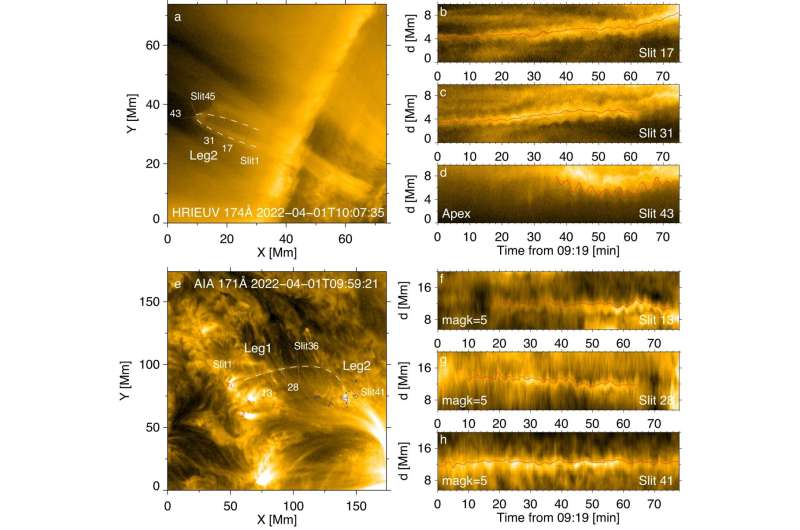September 14, 2023 report
This article has been reviewed according to Science X's editorial process and policies. Editors have highlighted the following attributes while ensuring the content's credibility:
fact-checked
peer-reviewed publication
trusted source
proofread
A step closer to understanding why the sun's corona is so hot

A team of astrophysicists at the University of Warwick in the U.K., working with colleagues from the Max Planck Institute for Solar System Research, Northumbria University and the Royal Observatory of Belgium has taken what might amount to another step closer to understanding why the sun's corona is so hot. In their study, reported in the journal Nature Communications, the group analyzed data from two sources of solar information.
The sun's corona is the outermost part of its atmosphere—prior research has suggested that it is thousands of times hotter than the interior. And despite much effort, scientists still do not know why that is. In this new effort, the research team took a new approach to finding the reason for the corona's intense heat.
The work by the group involved studying data collected by ESA's Solar Orbiter and NASA's Solar Dynamics Observatory. Both sources offered data regarding the plasma that makes up most of the corona, including its loops. Loops are arch-like structures that are made of very dense plasma that separates them from the rest of the corona. They begin and end at foot points on the photosphere. In analyzing data for the loops, the research team found never-before-observed kink oscillations. These oscillations were evident from both the probe orbiting the sun and the other orbiting the Earth. The loops were vibrating like guitar strings.
The researchers then took a closer look, measuring characteristics of the oscillations and their rate of decay. Things that oscillate, they note, must either decay and eventually stop, or have an energy source that keeps them moving. In studying the kink oscillations, the research team found that they did not decay, suggesting that there is some sort of energy source keeping them going.
The researchers further suggest that whatever that energy source might be, it is not random—it must be intrinsic. They theorize that the same source of energy is likely responsible for the extreme heat in the corona. They conclude that a more in-depth study of coronal oscillations could reveal the ultimate source of heat generated in the corona.
More information: Sihui Zhong et al, Polarisation of decayless kink oscillations of solar coronal loops, Nature Communications (2023). DOI: 10.1038/s41467-023-41029-8
Journal information: Nature Communications
© 2023 Science X Network





















